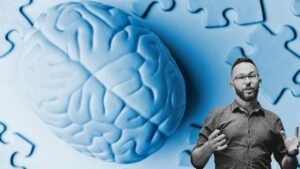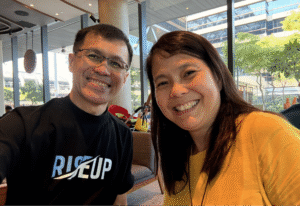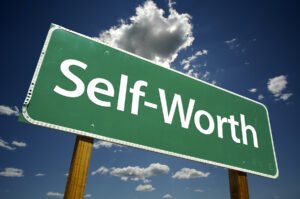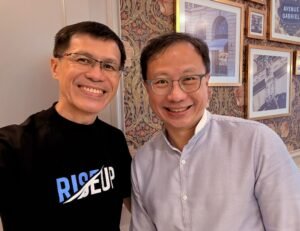I. Introduction: Bridging Generational Gaps in Leadership
The challenge lies in how leaders from these diverse generational backgrounds can keep up with a market that demands continuous innovation and agility. For instance, a Baby Boomer leader might struggle to adapt to the digital-first mindset of Gen Z employees, while a Millennial manager may find it difficult to balance collaboration and strategic planning with decisive action. These generational differences create both opportunities and friction for senior leaders in today’s workplace.
How can leaders develop the same leadership skills needed to stay competitive regardless of their age or background? The answer lies in continuous leadership development, which ensures leaders remain effective by consistently refining their skills, embracing new trends, developing skills, and fostering cross-generational collaboration.
II. The Importance of Continuously Engaging in Leadership Development Across Generations

What It Is
Continuous development in leadership is an ongoing process of learning, self-improvement, and adaptability to meet evolving workplace challenges. It is crucial in bridging generational gaps by equipping future leaders with the essential skills to manage diverse teams, integrate new technologies, and navigate shifting market trends.
The Stakes: Statistics & Studies
- Leadership Development Challenges: A 2024 survey revealed that 54% of CEOs anticipate increased challenges in their roles, underscoring the urgency for effective leadership development strategies. Forbes
- Revenue Per Employee: Companies with highly engaged employees, often due to effective leadership development, experience 23% greater profitability. Training Industry
- Impact on Employee Engagement: Society for Human Resource Management reports that managers influence up to 17% of the overall employee experience, which is vital to fostering workplace satisfaction and engagement. (SHRM)
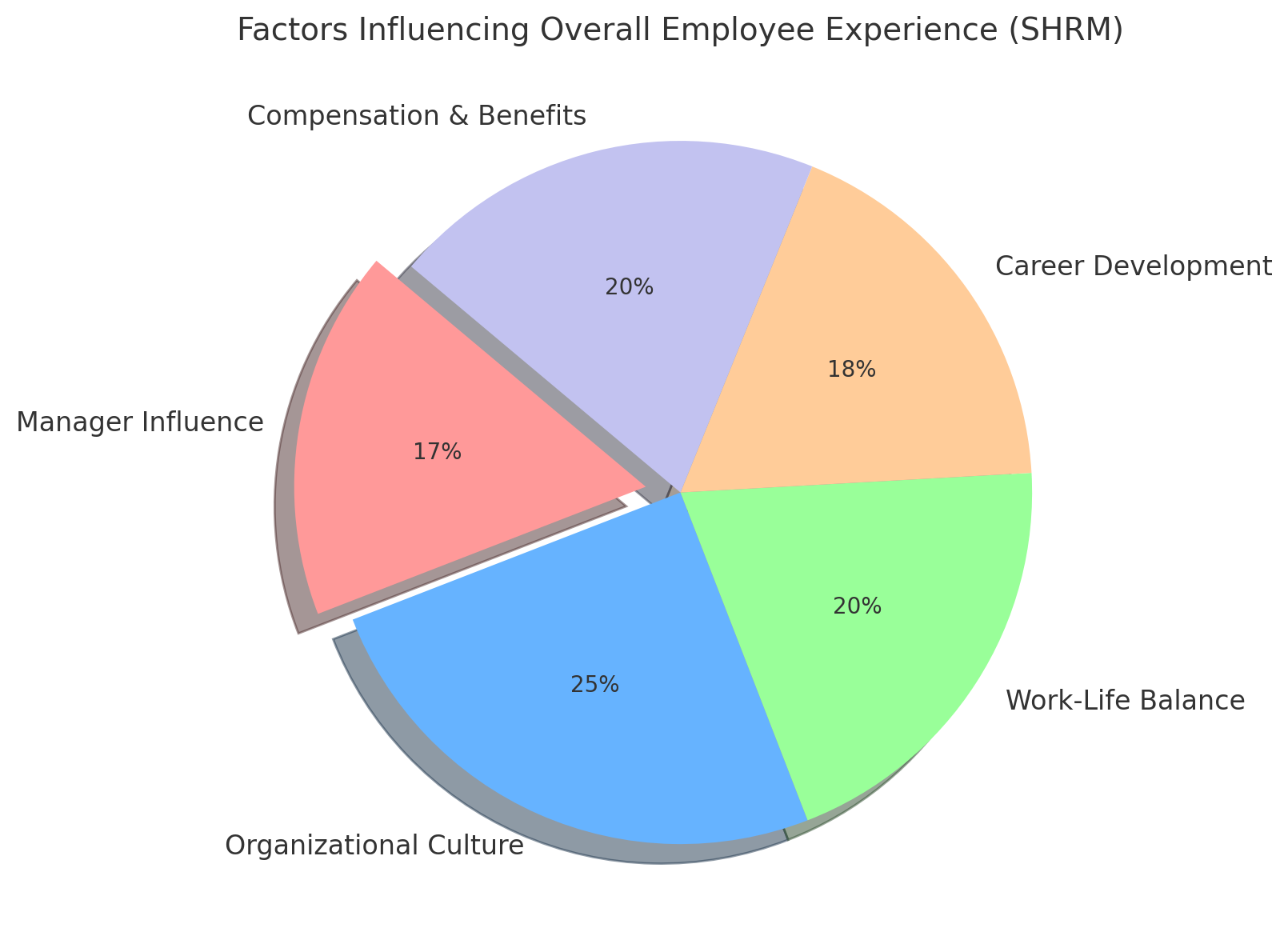
- Declining Trust in Leadership: Recent studies show a decline in employee trust in business leaders, emphasising the need for effectiveness in leadership development to rebuild confidence.
These statistics underscore the critical importance of robust leadership development programs in addressing organisational challenges, enhancing efficiency, boosting employee engagement, and rebuilding trust within the workforce.
III. Challenges Leaders Face Across Generations

Despite the advantages of a diverse workforce and organisational culture, each generation developing leaders faces unique leadership challenges:
Common Challenges
Understanding each generation’s unique challenges in leadership assignments and roles is crucial for creating inclusive and effective development strategies.
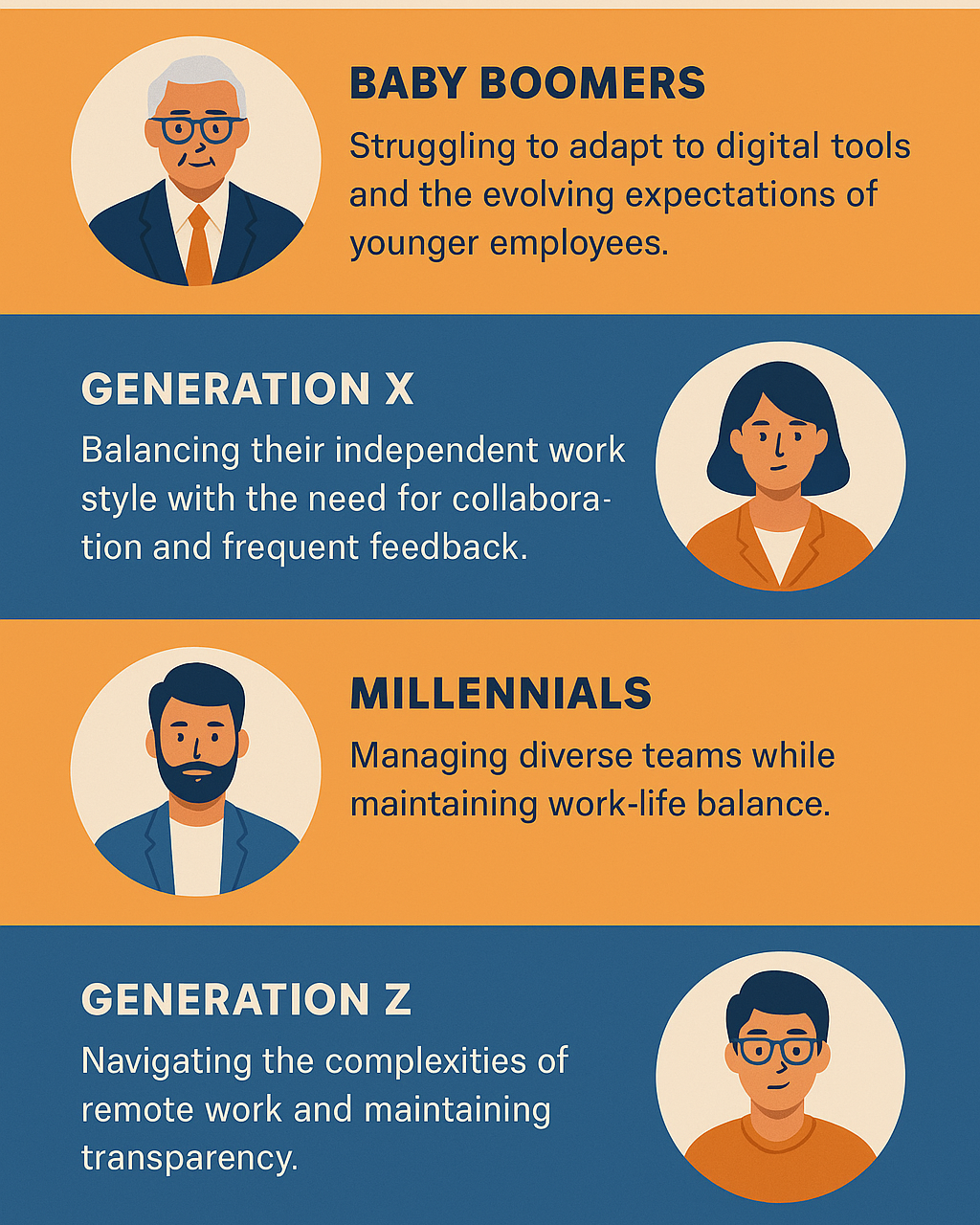
Baby Boomers
Baby Boomers often bring a wealth of experience and a strong work ethic to leadership roles. However, many find it challenging to keep pace with rapid technological changes, digital collaboration platforms, and younger generations’ more flexible, feedback-driven expectations. Adapting to virtual communication, shifting workplace norms, and new management technologies can be a steep learning curve.
Generation X
Gen X leaders value autonomy and often prefer to manage projects independently. Yet, today’s team-oriented and feedback-rich work culture can challenge this leadership style. They may need to adjust by adopting more open communication practices, engaging in team-based decision-making, and fostering real-time feedback loops without feeling micromanaged.
Millennials
Millennial leaders are generally strong advocates for inclusion and purpose-driven work. However, as they step into more senior leadership assignments and roles, many face the pressure of managing increasingly diverse and multigenerational teams while also preserving their own work-life boundaries. The constant demand for empathy, flexibility, and innovation can lead to burnout if not balanced effectively.
Generation Z
As the newest entrants to leadership, Gen Z leaders often find themselves managing hybrid or fully remote teams early in their careers. Their challenge lies in building trust and transparency in digital-first environments while gaining respect and authority among older colleagues. They may also struggle to establish compelling communication rhythms and foster team connection without physical interaction.
IV. Strategies for Embracing Continuous Development in Leadership Across Generations

1. Set Intentional Learning Goals
Align personal leadership development efforts with organisational objectives. For example, if innovation is a priority, focus on creative problem-solving skills and leadership behaviors that resonate with younger employees.
2. Seek Feedback Regularly
Consistently gathering feedback is essential for leaders of all generations to refine their leadership styles and enhance skills. By actively seeking input from team members and other leaders, they can identify areas for improvement and drive growth. This practice fosters open communication and encourages innovation, ensuring leaders remain effective. Regular feedback sessions also strengthen team relationships, boosting employee engagement and understanding of organisational goals.
3. Adopt Micro-Learning Techniques
Micro-learning techniques offer an efficient way for leaders across generations to enhance their leadership skills. By engaging in short, focused learning sessions, leaders can quickly grasp new concepts and apply them to real-world business challenges. This method supports continuous learning by breaking down complex topics into manageable pieces, enabling leaders to stay current with emerging trends and leadership competencies. Integrating micro-learning into leadership development initiatives allows leaders to adapt to changing environments and drive organisational success without overwhelming their schedules.
4. Leverage Technology
Platforms like Coursera, Udemy, and LinkedIn Learning offer flexible options for skill-building, helping leaders from all generations stay updated on the latest trends.
5. Foster a Learning Culture
Creating a learning culture is essential for continuous leadership development across generations. It involves encouraging curiosity, promoting skill development, and supporting ongoing education within the organization. By fostering an environment where learning is valued, leaders can drive personal and professional growth, ensuring they remain adaptable and up to date with industry trends. This culture not only enhances individual leadership competencies but also strengthens team dynamics and cohesion. Encouraging diverse teams to share valuable insights and engage in cross-functional projects can lead to innovative solutions and drive organizational success. Ultimately, a strong learning culture empowers leaders to effectively navigate real-world business challenges and achieve company goals.
V. The Payoff: Why Continuous Development is Worth It
Key Benefits
Enhanced Decision-Making: Leaders with ongoing training make better strategic decisions.
Increased Employee Engagement: Teams are more motivated when they see their leaders prioritising growth.
Greater Adaptability to Change: Leaders who invest in continuous learning can better navigate industry shifts.
Encouragement of Innovation: A growth mindset fosters curiosity and exploration, leading to new ideas and improvements.
Real-Life Success Stories
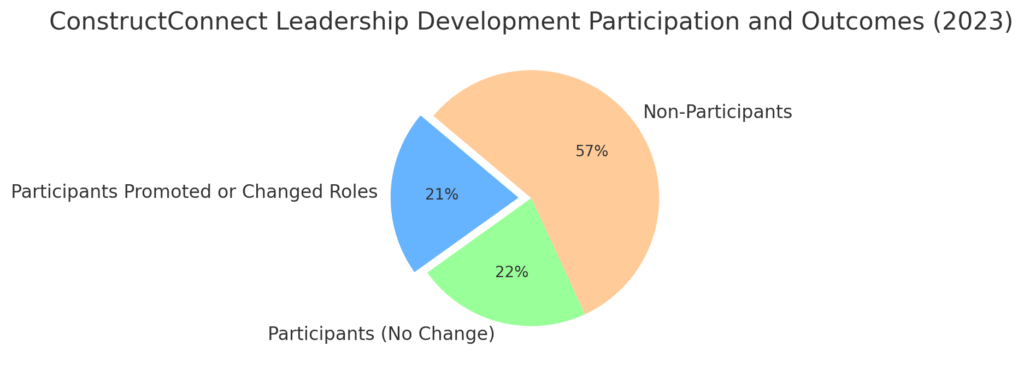
1. ConstructConnect’s Leadership Development Spectrum
ConstructConnect implemented a comprehensive leadership development program, achieving 43% company-wide participation in 2023. Notably, 21% of these participants received promotions or job changes within the same year. Training Industry
2. Hazelden Betty Ford Foundation’s Bench Strength Experience
The Hazelden Betty Ford Foundation, in collaboration with MDA Leadership Consulting, launched the Bench Strength Experience—a blended-learning leadership development program. This initiative has been recognised for its effectiveness in providing growth opportunities for participants and strengthening the organisation’s leadership pipeline. Hazelden Betty Ford
3. Securitas’ Accelerate Leadership Program
In partnership with the Center for Creative Leadership (CCL), Securitas developed “Accelerate,” a six-month leadership development journey tailored for area vice presidents. This program was designed to equip participants with the self-awareness and skills necessary to achieve ambitious business goals.
These cases highlight the tangible benefits of targeted leadership development programs in enhancing organisational performance and employee growth.
VI. Frequently Asked Questions (FAQs)
Continuous development in leadership plays a pivotal role in bridging generational gaps within organisations. Companies can foster collaboration and enhance overall performance across diverse age groups by using strategic thinking and implementing tailored leadership development strategies. Below are insights addressing common questions on this topic:
1. How can the continuous improvement in leadership development help bridge the generational gap in leadership roles?
Continuous leadership development ensures that leaders from all backgrounds can effectively manage diverse teams and adapt to new technologies and market trends. Organisations can create a more cohesive work environment by fostering collaboration and understanding among different generations of capable leaders. For instance, engaging senior leadership in mentoring programs and championing inclusivity are effective ways to bridge generational gaps.
2. What strategies are most effective for leaders to overcome challenges from different generations?
Tailoring learning goals for experienced leaders, utilising micro-learning techniques, and fostering open communication are key strategies for cross-generational leadership growth. Leaders who understand their own generational uniqueness can step out to be what leaders learn they need to be for everyone across the organisation, thereby increasing engagement and productivity. Phillip Tanzilo
3. What’s the ROI of investing in leadership skill development, initiatives and training across generations?
Investing in structured leadership development programs yields significant returns for organisations. According to a report titled “The State of L&D in 2024,” employers see a $7 return on investment (ROI) for every $1 spent on leadership programs. Additionally, a Forbes article highlights that companies report an ROI of over $7 for every $1 invested in coaching, emphasising the financial benefits of such initiatives.
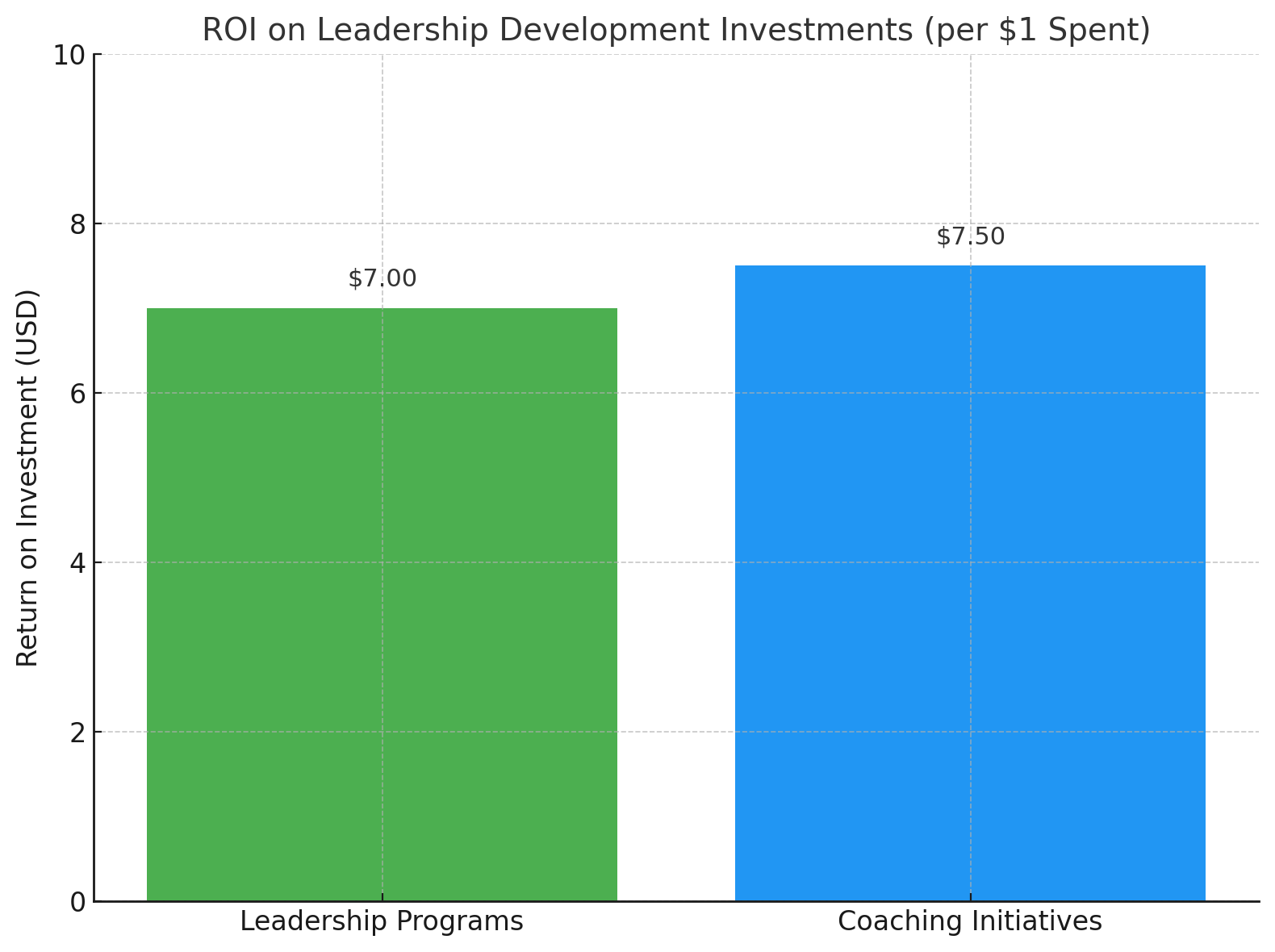
Furthermore, organisations that implement effective leadership development strategies often experience enhanced team performance, higher employee retention rates, and increased revenue per employee. A study published in the Harvard Business Review found that, under the right circumstances, leadership development can substantially impact employees and employers. Harvard Business Review
VII. Conclusion: Take the First Step Today
Take action today by identifying one area for improvement—whether enrolling in a course, seeking executive coaching or mentorship, or implementing feedback from your team. Leadership is a journey, not a destination, and the key to long-term organisational success is a commitment to continuous learning.

A trailblazer in humanising leadership and building high-resilience teams. As a former United Nations Peacekeeper, he leverages his high-stakes experience to redefine leadership dynamics. With a career distinguished by numerous accolades, Joseph now helps organizations thrive through a human-centric approach, enhancing performance, productivity, and workplace culture.

